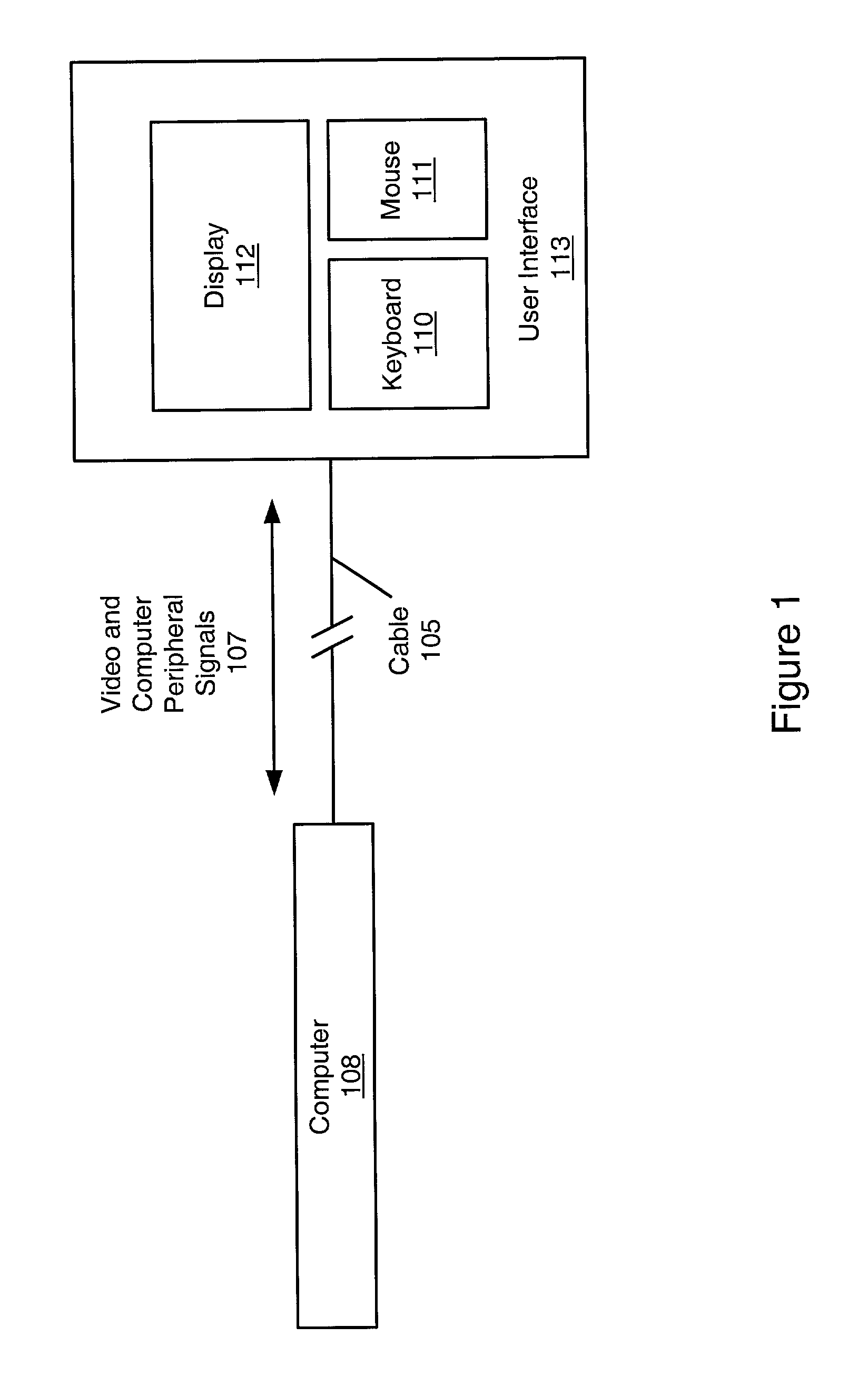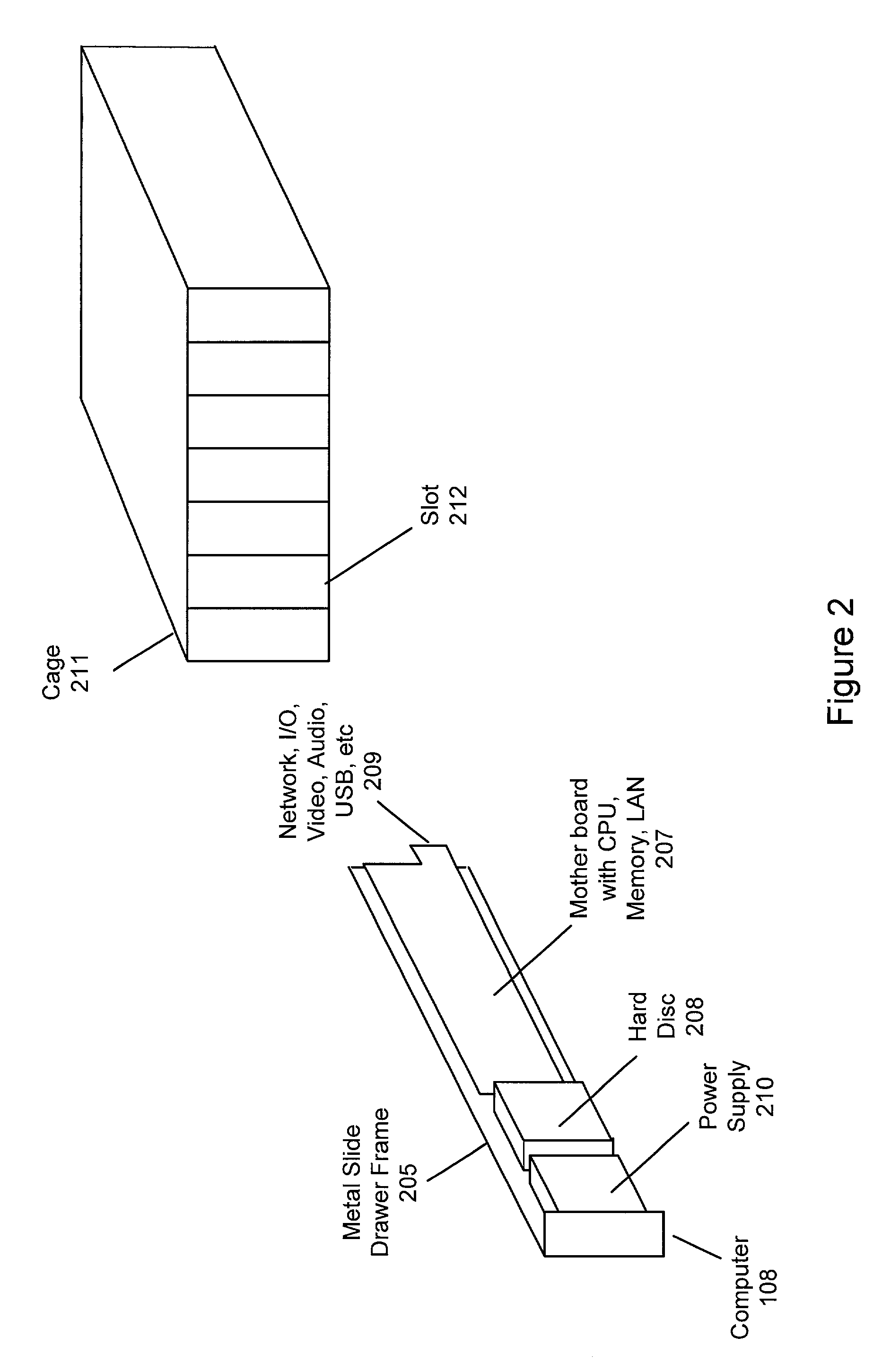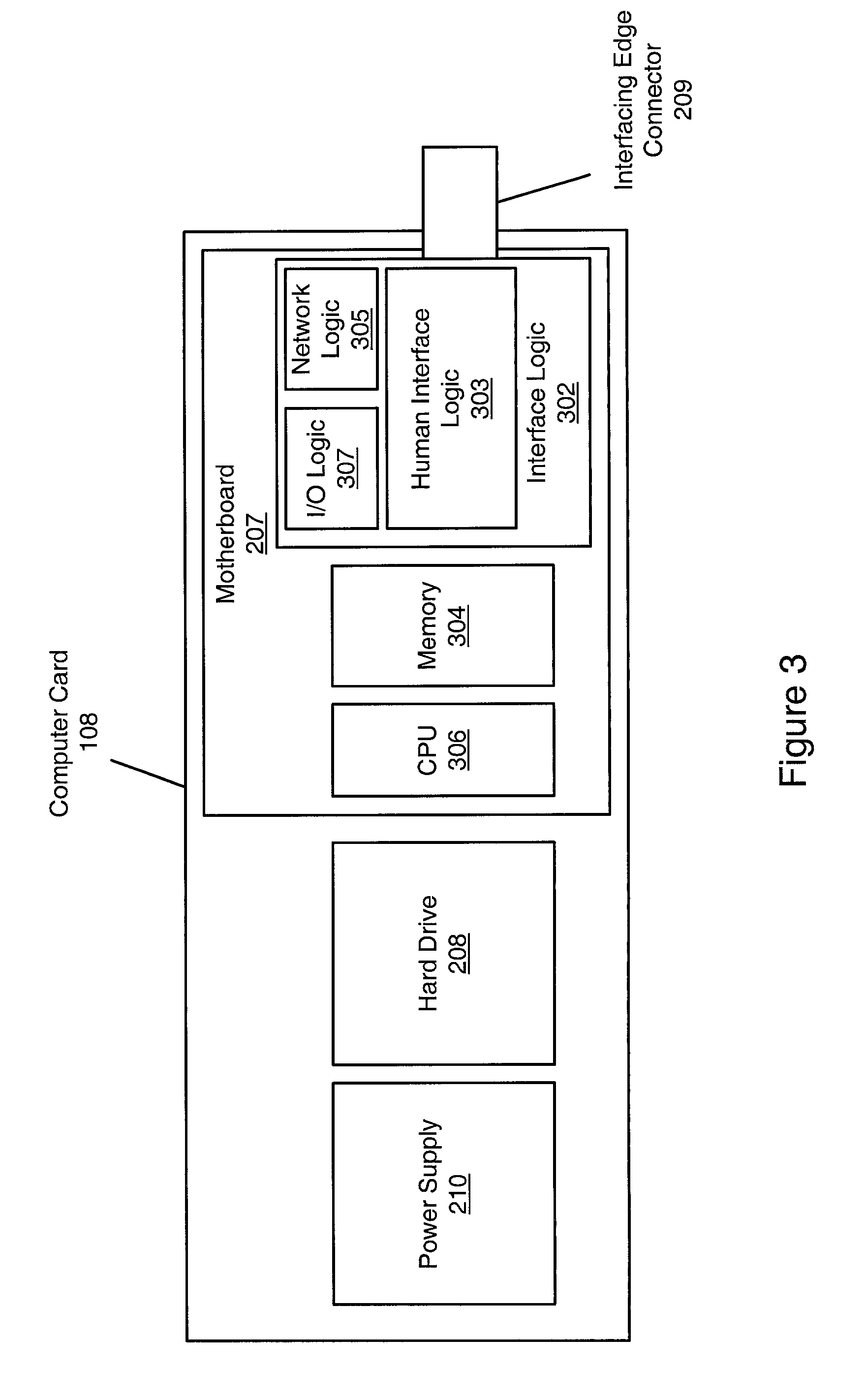Computer on a card with a remote human interface
a human interface and computer technology, applied in the field of computer systems, can solve the problems of increasing complexity and cost of managing such resources, unauthorized software installation, data protection and software control,
- Summary
- Abstract
- Description
- Claims
- Application Information
AI Technical Summary
Benefits of technology
Problems solved by technology
Method used
Image
Examples
Embodiment Construction
Incorporation by Reference
28. U.S. Provisional Patent No. 60 / 144,809 titled "A Technique To Extend The Operating Distance Of A Universal Serial Bus" is hereby incorporated by reference in its entirety as though fully and completely set forth herein.
29. U.S. Pat. No. 6,119,146 titled "Computer Network Having Multiple Remotely Located Human Interfaces Sharing A Common Computing System", which was filed May 4, 1998, whose inventors are Barry Thornton, Andrew Heller, Daniel Barrett, and Charles Ely, is hereby incorporated by reference in its entirety as though fully and completely set forth herein.
30. U.S. Pat. No. 6,038,616 titled "Computer System With Remotely Located Interface Where Signals Are Encoded At The Computer System, Transferred Through A 4-Wire Cable, And Decoded At The Interface", which was filed May 4, 1998, whose inventors are Barry Thornton, Andrew Heller, Daniel Barrett, and Charles Ely, is hereby incorporated by reference in its entirety as though fully and completely...
PUM
 Login to View More
Login to View More Abstract
Description
Claims
Application Information
 Login to View More
Login to View More - R&D
- Intellectual Property
- Life Sciences
- Materials
- Tech Scout
- Unparalleled Data Quality
- Higher Quality Content
- 60% Fewer Hallucinations
Browse by: Latest US Patents, China's latest patents, Technical Efficacy Thesaurus, Application Domain, Technology Topic, Popular Technical Reports.
© 2025 PatSnap. All rights reserved.Legal|Privacy policy|Modern Slavery Act Transparency Statement|Sitemap|About US| Contact US: help@patsnap.com



